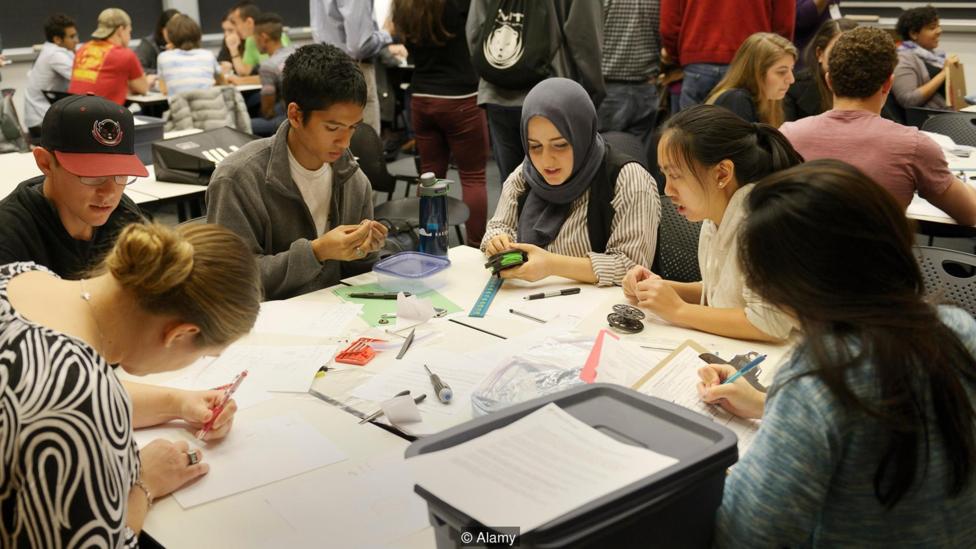
Today’s youngest generation is more multilingual and wired than ever. Could the tech they’re using breed a global army of polyglots?
Hillary Yip is a 13-year-old student from Hong Kong. She’s also an ambitious app developer and CEO. Designed by a kid, for kids, her smartphone app, Minor Mynas, connects children from around the world for a specific purpose: to learn each other’s mother tongue.
Yip epitomises the globalised, digitally connected teen of today’s youngest generation, which has grown up through the unique conditions the 21st Century – technology that connects people all over the world, an increasingly culturally diverse global population, and the rise of personalised educational apps and games.
Could these factors combine to create the most multilingual generation yet?
A more diverse world
The youngest generation is growing up in a time in history that provides a lot of opportunity. Cultural diversity is increasing globally, especially due to increasing levels of international migration, says professor Steven Vertovec, managing director of the Max-Planck-Institute for the Study of Religious and Ethnic Diversity in Göttingen, Germany. He points to the latest UN World Migration Report, which found that 258 million people live in a country other than their country of birth — an increase of 49% since 2000. “Hence more people, from more diverse backgrounds, are coming into contact with each other in cities around the world,” he says. “This is set to continue, again globally.”

The world is becoming more multicultural – that could potentially make kids more open to learning new languages (Credit: Alamy)
This increased migration, especially in cities, brings people with a wide variety of cultural and linguistic backgrounds into close contact. Could a more multicultural world lead to a more multilingual generation?
It’s likely to contribute to an environment with more opportunities for language learning, says Angela Creese, professor of educational linguistics at the University of Birmingham. “What it’s likely to do is have a positive orientation to differences, both social and linguistic, so that people are more likely to be creative and interested in other languages. They have a connection and access to linguistic resources – they’re not going to be fighting them as in a monolingual environment, where people are slightly nervous about different languages.”
Younger generations are more likely to speak a foreign language
“I think it’s certainly true, at least in Europe, that young people know more foreign languages than before,” says Antonella Sorace, a professor of developmental linguistics at the University of Edinburgh. She points to a 2011 study that found that 77% of EU millennials speak more than one language. “This share fell for each successive age group, with the lowest proportion recorded among those aged 55–64,” she says.
Those numbers were high in young professionals with high levels of education, suggesting that at least some firms prioritise foreign language training among staff, the study says. It also says that as globalisation has fuelled economic growth in less developed countries, as well as prompted travel for both business and pleasure, more people are speaking more languages, especially English.

Gameified learning apps on devices like smartphones and tablets making language acquisition easier (Credit: Alamy)
In the US, a record 65.5 million US residents speak another language at home, a number that has doubled since 1990. Many of these foreign language speakers are not immigrants: the study found half of the growth in foreign language speakers since 2010 was among those born in the US. What’s more, the study found nearly one in four American public schoolchildren spoke a foreign language, a higher proportion than the average for all age groups.
A similar trend is happening in Canada, where the number of people who speak a language other than English or French has risen by 14.5% since 2011.
Tom Roeper, a linguistics professor at the University of Massachusetts, Amherst, says that classrooms around the world could soon be filled with more children who, across the whole class, might speak six or more languages combined. He points to the idea of the “translanguaging classroom”, in which students who speak different languages can pick up bits and pieces of the language from their classmates in an increasingly diverse classroom. “[Teachers] should figure out a way to include that in class,” Roeper says. “What does a teacher do when he’s faced with a bunch of African kids, or Turkish kids, Asian children? The challenges teachers are facing is [figuring out how] that should be part of the class.”
Connecting to others in a flash
Another factor that could count toward today’s generation of young polyglots? Any teenager with a smartphone and an internet connection can have a video conversation with their multilingual peers oceans away. Twenty years ago, such a thing was unfathomable.
The Pew Research Center says that in the US, 57% of teens have made new friends online, with “social media and online gameplay [as] the most common digital venues for meeting friends.” It’s no surprise that Yip’s app taps into these behavioural trends.
“Until not very long ago, making friends in another language was a bit of an enterprise,” says Sorace. “You had to go to the other country, spend some time there, have your parents organise this – now it’s much more immediate with all these technological means.”
Playing games to boost fluency
“Edutainment” as a learning tool is nothing new. Video games with an educational slant – think The Oregon Trail – have existed for decades.
But with the internet and handheld smart devices, this kind of tech-forward education has reached new heights: hundreds of language apps which have gamified learning make it convenient to practice on the go and are cheaper than pricy PC games. They’re also popular: Duolingo, perhaps the best-known, has 200 million users worldwide, and another, busuu, has more than 80 million.

Increased multiculturalism powered by more migration has resulted in classrooms that are more diverse than ever (Credit: Alamy)
The rise of cheap or free apps that make learning fun has big implications for children who, unlike adults, are often not even aware that they’re learning something, when they actually are.
Experts point out that kids are good at implicit learning (doing something like playing games without realising they’re absorbing information or sharpening skills), versus explicit learning (physically going to a classroom and doing drills a teacher gives you in a constructed environment). “That’s why this technology helps,” says Sorace, referring to apps and games. “They get hooked doing something they like, and in fact they’re learning another language.”
As children become teenagers, they are more likely to be self-conscious and fear making mistakes in front of others. That’s where technology can also help, says Matthew Maclachlan, head of intercultural skills of UK-based Learnlight, a platform geared toward adults learning a second language. “I’m not standing in front of a class of 29 other teenagers while I decline the verb,” Maclachlan says. “I’m doing it in an online environment, where I’m getting instant feedback and I can experiment. I’m more inclined to guess, because it’s a computer. When you’re with a real person, you won’t guess – you’ll just say, ‘I don’t know.’”
The limits to tech
Despite the many new ways that technology can aid these wired kids growing up in an increasingly diverse and interconnected world, experts say it works better as a complement to, rather than a replacement for real-life, in-person contact.
And when you look at language specifically, learning apps still need to be thought of as complementary tools. Duolingo users may well have brag-worthy scores in French, Danish, or Hungarian, but if you genuinely want to get better, there comes a point where you need to start practising with native speakers. “I can get on Skype with my teacher based in Mexico City, and I have a real conversation with a native speaker,” Maclachlan says. “I get the best teacher, not just the best Spanish speakers here [in my English village].”
Looking forward? Today’s children have already moved on from fiddling with smartphones and tablets and have moved to summoning voice-activated assistants like Cortana or Alexa. That kind of AI, along with increasingly sophisticated chatbots, could appear as new language-learning tech tools.
Maclachlan reckons we’re 12 to 18 months away from it. “It’s not going to be long where I can actually have a conversation with my technology, and it catches all my mistakes when I’m talking to it,” he says.
Why language learning matters
The benefits of speaking many languages are well-documented. It staves off dementia, sharpens concentration and problem-solving skills, and can earn you more money.
For Hillary Yip, more communication and greater understanding between today’s youth could help tear down barriers society springs around them as they get older – even as they’re using the app continents apart. “In the adults’ world, there’s a ton of things about race, gender, and other stereotypes,” she says. “But for kids, everyone is just a kid.”
Source: By Bryan Lufkin
bbc.com



 Skype
Skype Messenger
Messenger Viber
Viber Contact form
Contact form





